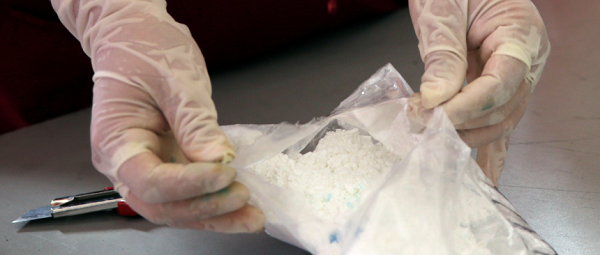Cocaine Addiction Rate Raises In The US Thanks To Colombia's Booming Coca Supply

Colombia is pumping out more cocaine than ever, resulting in a major rise in use and availability of the drug in the United States, according to the State Department’s annual International Narcotics Control Strategy Report. In 2015, 90 percent of the cocaine seized by the Drug Enforcement Agency was manufactured in Colombia, the report said.
The report, which was released Wednesday, said the South American country was the highest producer of the world’s cocaine. It accounted for more than 495 metric tons of the illicit drug’s availability across the globe in 2015, which was up 60 percent compared to 2014’s 185 metric tons of Colombian-cultivated coca.
“There are troubling early signs that cocaine use and availability is on the rise in the United States for the first time in nearly a decade,” the State Department said.
It was no secret the U.S. has been facing an opioid epidemic, which caused more than 183,000 overdoses in 2015. However, the State Department’s March 2017 report appeared to be in line with a recent Substance Abuse and Mental Health Administration’s report that said cocaine-related deaths were the highest in 2015 since 2006.
That report also noted that cocaine use was up 26 percent in 2015, with more than 986,000 people 12 or older having indicated they used cocaine use within the year, while only roughly 766,000 were discovered to have used cocaine within 2014.
During a teleconference Thursday, Ambassador William Brownfield, who is the assistant secretary of the International Narcotics and Law Enforcement Affairs, said Tuesday that Colombia’s increasing coca crop was a “direct relationship between supply and demand, between production and market.” However, he noted that U.S. and Colombian officials were working together to crack down on the booming production.
"Over the last three years, both U.S. estimates and United Nations estimates indicate that there is a substantial increase in coca being cultivated and cocaine being produced in the Republic of Colombia. Colombia is a close friend, a partner, and, in fact, the government with which we have perhaps the closest relationship here in the Western Hemisphere over the past 17 years," he said. "We are working the problem. It is a serious problem. Both governments recognize this fact. Both governments realize that it is neither in the interest of Colombia, nor in the United States of America, nor, frankly, any country in the Western Hemisphere or the world."
© Copyright IBTimes 2025. All rights reserved.






















